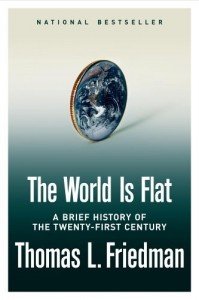The World is Flat Friedman's 10 Forces That Flattened the World I am hearing some good things about Friedman's book and hope to some day get a chance to read it. Wikipedia has a summary of the ten "flatteners" that Friedman sees as leveling the global playing field: Join the Discussion Which of Friedman's "flatteners" do you think has had the most impact on our global economy? Have you observed these forces changing your industry?
Tag: Books
Dr. Seus: Oh, the Places You’ll Go!
Oh, The Places You'll Go! Life Wisdom from Dr. Seuss "Congratulations! Today is your day. You're off to Great Places! You're off and away! You have brains in your head. You have feet in your shoes. You can steer yourself any direction you choose. You're on your own. And you know what you know. And YOU are the guy who'll decide where to go. You'll look up and down streets. Look'em over with care. About...
Book: Predictably Irrational
Kevin Rose recommended this book on this week's Diggnation which sounds interesting. You can buy it on Amazon here. Amazon's description is: "Irrational behavior is a part of human nature, but as MIT professor Ariely has discovered in 20 years of researching behavioral economics, people tend to behave irrationally in a predictable fashion. Drawing on psychology and economics, behavioral economics can show us why cautious people make poor decisions about sex when aroused. Why patients...
Book: Orbit – Inspiring Stories of Ordinary People Who Led Extraordinary Lives…
Obit: Stories of Ordinary Lives Discovering Wisdom in Final Farewells Key Themes Join the Conversation Have you read any books that changed your perspective on life and death? Share your recommendations in the comments below!



